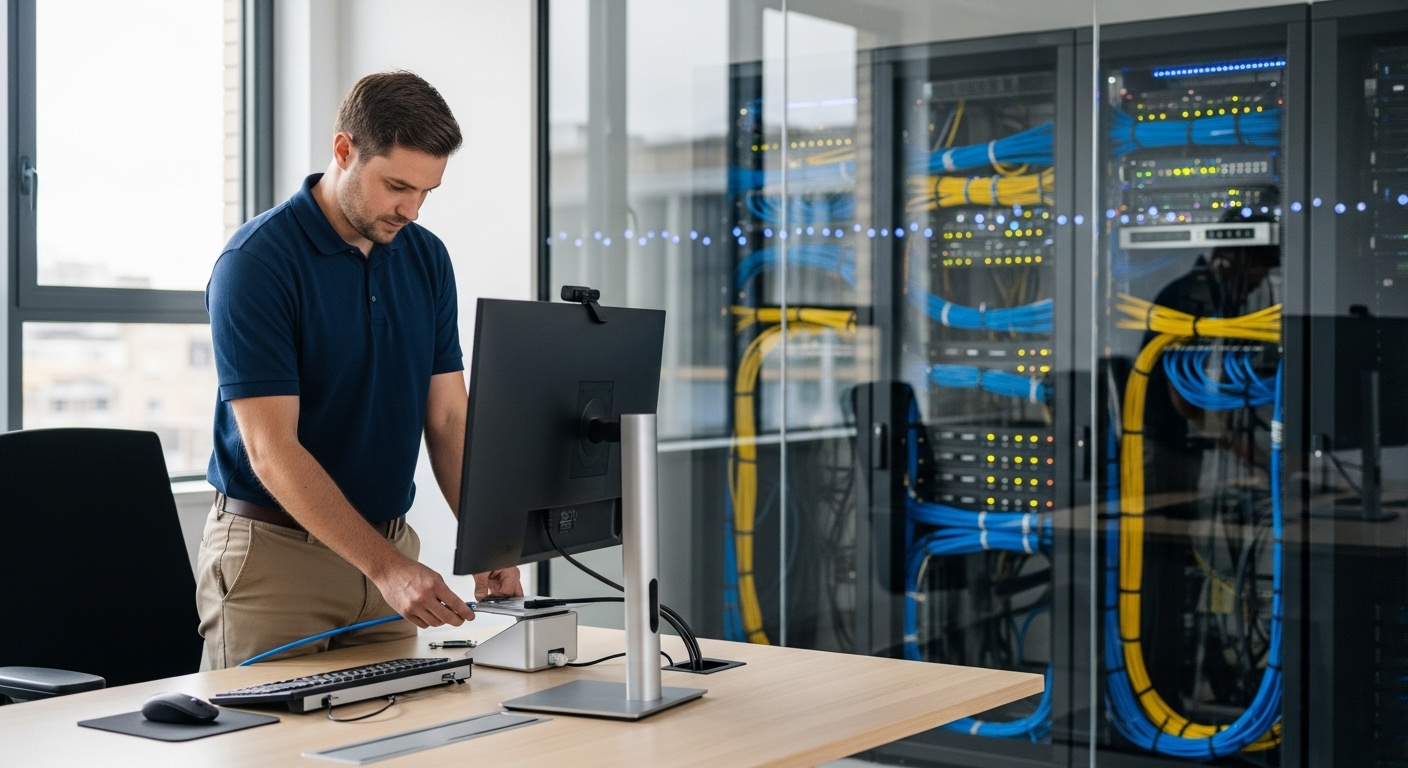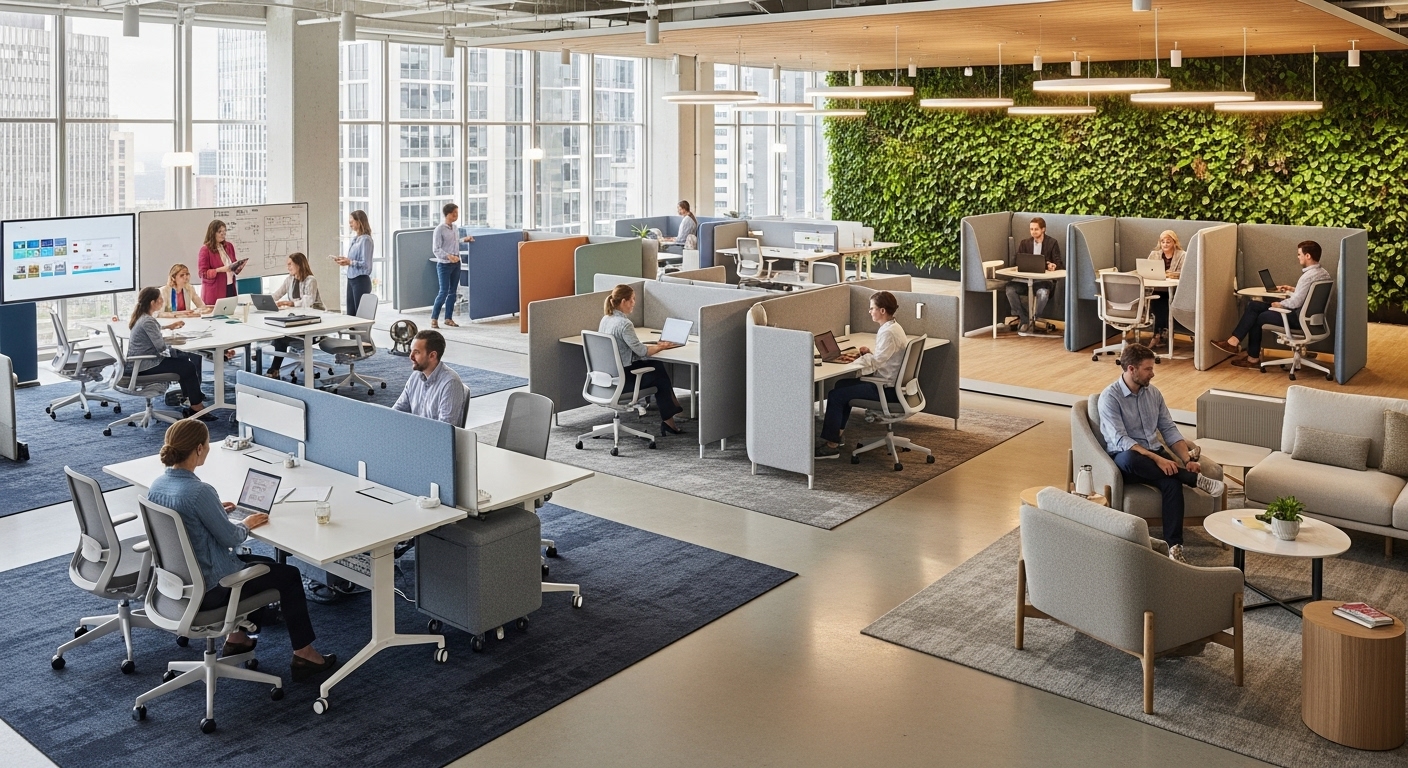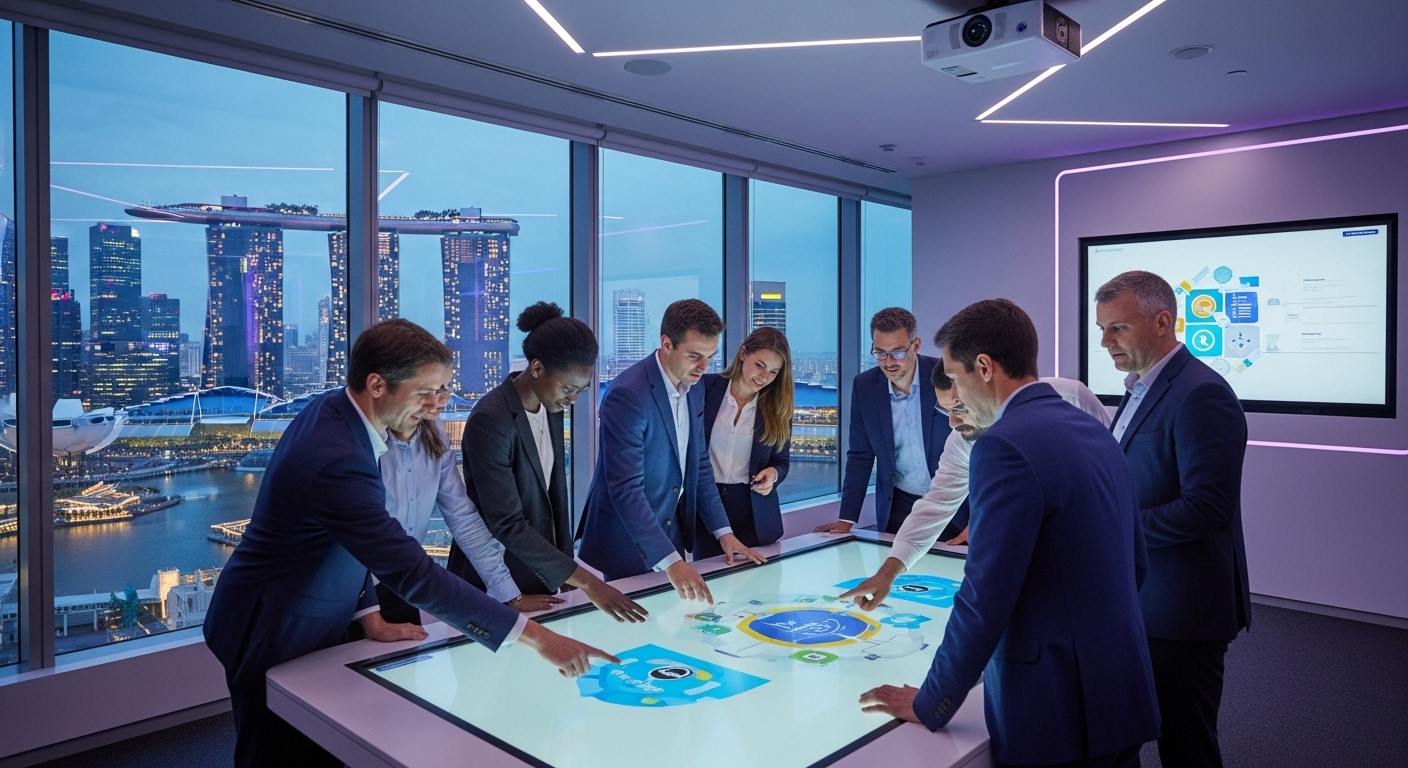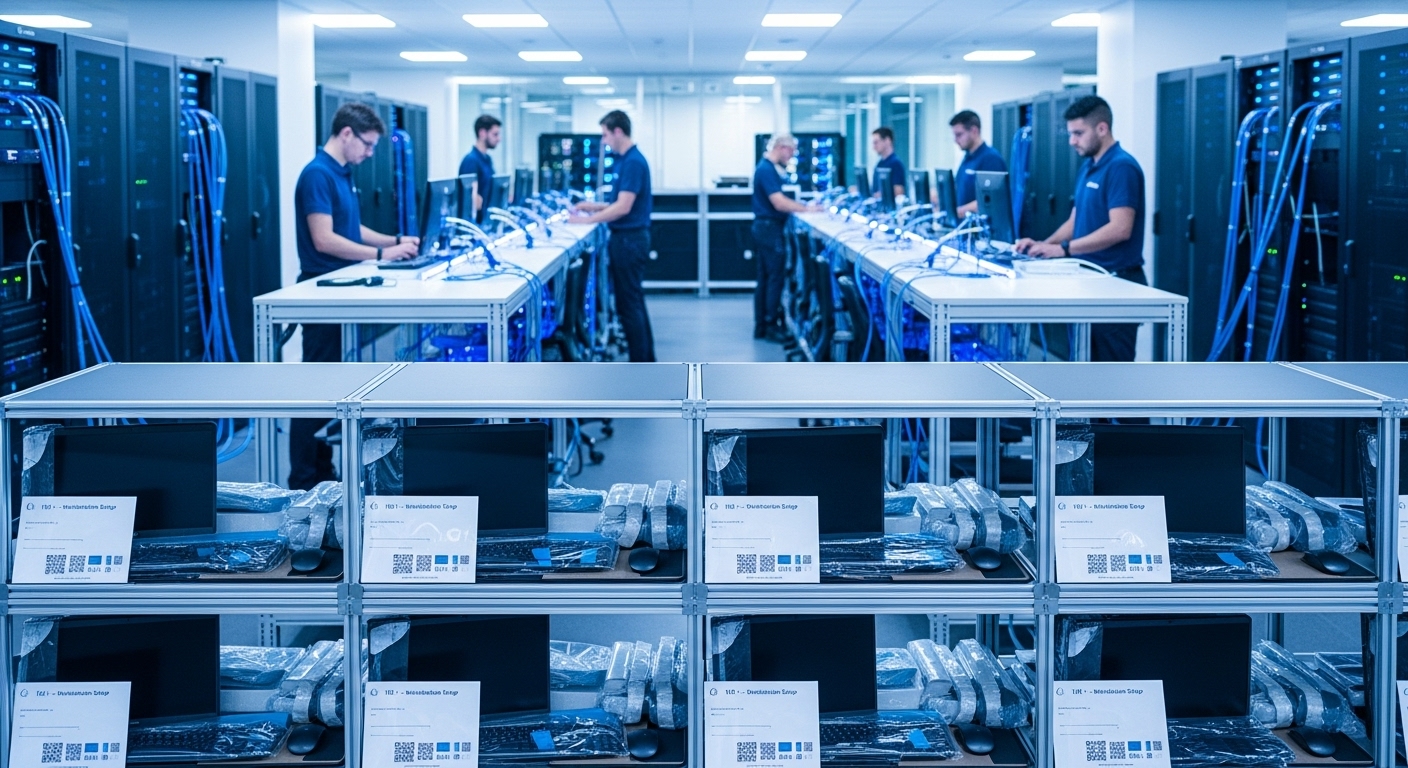Embarking on a new office setup or a major tech refresh is a landmark moment for any business, brimming with the promise of growth and enhanced capability. However, beneath the surface of this excitement lies a complex logistical web: the IT setup. Too often, this critical process is viewed as a mere shopping trip followed by some cable plugging. This misconception is a fast track to budget overruns, security vulnerabilities, and operational chaos. A truly effective IT setup is a meticulously orchestrated project that spans strategic procurement, infrastructure design, vendor coordination, and seamless deployment. In an era defined by hybrid work models and escalating cyber threats, mastering these logistics is no longer optional—it’s foundational to building a resilient, secure, and productive work environment. This guide will walk you through the entire journey, from the initial purchase order to a fully functional, ‘plug-and-play’ ecosystem, ensuring your technology backbone is a powerful asset, not a logistical liability.
Strategic Procurement: More Than Just a Shopping List
Effective IT setup begins long before the first box is opened; it starts with strategic procurement. This isn’t about simply buying the latest hardware; it’s about acquiring the right tools for your specific business needs, both now and in the future. The first step is a thorough needs assessment. This involves mapping out every user role within the organization and identifying their specific hardware and software requirements. A sales executive on the road has vastly different needs than a developer in the office. This analysis prevents overspending on overpowered machines and underspending on critical roles. Furthermore, it’s crucial to look beyond the initial sticker price and consider the Total Cost of Ownership (TCO). TCO includes the upfront cost plus ongoing expenses like support, maintenance, energy consumption, and eventual disposal. A cheaper device might have a higher TCO due to frequent repairs or a shorter lifespan. Standardizing equipment is another cornerstone of strategic procurement. Choosing one or two models for laptops, desktops, and peripherals dramatically simplifies management, troubleshooting, and repairs. It allows your IT team to maintain a smaller inventory of spare parts and develop deep expertise, leading to faster issue resolution. This foresight in procurement lays the groundwork for a scalable and manageable IT environment, turning a chaotic shopping spree into a calculated investment.
The Infrastructure Blueprint: Designing Your Network for Tomorrow
Before a single piece of hardware is ordered, you need a blueprint. Your IT infrastructure is the central nervous system of your office, and its design dictates the speed, reliability, and security of your entire operation. A common mistake is underestimating physical space and future needs. Start with structured cabling. Planning the layout for network ports, Wi-Fi access points, and conference room connectivity is essential. High-quality, properly installed cabling (like Cat6a) ensures you can support high-bandwidth applications for years to come. Equally important is the design of your server room or IT closet. This space requires dedicated power circuits, robust cooling to prevent hardware failure, and physical security to protect your most critical assets. One of the most significant design decisions is the balance between on-premise and cloud infrastructure. While the cloud offers scalability and flexibility, certain applications or data security requirements might necessitate on-premise servers. A hybrid approach is often optimal, but this decision must be made at the design stage to ensure seamless integration.
“Businesses that neglect to plan for 20-30% growth in their initial network design often face costly and disruptive upgrades within just a few years.”
This forward-thinking approach ensures your infrastructure isn’t just built for day one but is a scalable foundation ready to support your company’s future ambitions.
Vendor Management: Assembling Your A-Team
IT setup logistics are rarely a solo act. The process involves a complex dance between multiple vendors, including Internet Service Providers (ISPs), hardware suppliers, software resellers, and low-voltage cabling installers. Without meticulous coordination, this can descend into a chaotic blame game where deadlines are missed and critical components fail to integrate. Effective vendor management begins with clear contracts and robust Service Level Agreements (SLAs). For your ISP, this means defining guaranteed uptime, bandwidth, and response times for outages. For hardware suppliers, it means clarifying warranties and delivery schedules. Centralizing this coordination through a single project manager—whether an internal hire or a trusted IT partner—is paramount. This individual creates a master project plan, a single source of truth that outlines every task, dependency, and deadline. They are responsible for scheduling vendor arrivals to avoid conflicts, such as ensuring cabling is installed before the walls are painted and network hardware is on-site before the ISP technician arrives. Regular check-in meetings with all stakeholders keep everyone aligned and allow for proactive problem-solving. Assembling this A-team of reliable vendors and managing them under a unified plan transforms a potentially fragmented process into a synchronized, efficient operation.
Deployment and Installation: The Physical Logistics
With procurement, design, and vendor management handled, the process moves into the physical realm of deployment and installation. This is where the blueprint becomes reality, and precision is key. The first logistical step is creating a detailed schedule for equipment delivery and staging. Hardware should arrive in a coordinated fashion and be stored in a secure, organized area. Upon arrival, every single asset—from laptops to servers to monitors—must be unboxed, inspected for damage, and given a unique asset tag. This asset tagging process is non-negotiable; it’s the foundation for all future IT management, tracking, and auditing. Next comes the physical installation. In the server room, this involves carefully racking and stacking servers, switches, and firewalls, followed by methodical cable management. Neat, labeled cabling isn’t just for aesthetics; it’s crucial for simplifying future troubleshooting and upgrades. On the office floor, the team sets up workstations, docks monitors, and mounts wireless access points according to the pre-defined layout. A critical but often-overlooked step is comprehensive testing. Before a single employee sits down, every network port must be tested, Wi-Fi signal strength must be verified in every corner of the office, and connections to printers and other shared resources must be confirmed. This meticulous, hands-on phase ensures that when employees arrive, the technology is truly ready to go.
Fortifying the Foundation: Integrating Security from Day One
In modern IT, security cannot be an afterthought; it must be woven into the very fabric of the setup process. Deploying a new network without robust security configurations is like building a bank and leaving the vault door wide open. This integration must start during the installation phase. As network hardware like firewalls and switches are installed, they must be configured immediately with security policies. This includes setting up network segmentation to isolate critical systems, implementing access control lists to restrict traffic, and enabling intrusion detection systems. Endpoint security is the next layer. Before any laptop or desktop is handed to an employee, it must be provisioned with antivirus, anti-malware, and endpoint detection and response (EDR) software. This is often accomplished by creating a ‘golden image’—a standardized, pre-configured operating system with all necessary security tools and business applications installed, which can be rapidly deployed to new machines. User access policies must also be defined from the outset. Following the principle of least privilege, employees should only be granted access to the data and systems absolutely necessary for their roles. This minimizes the potential damage if a user’s account is ever compromised. By building these security layers during the setup, you create a fortified foundation, significantly reducing your organization’s attack surface from the moment you go live.
The Final Mile: User Onboarding and System Handover
The final stage of IT setup logistics is the most human-centric: ensuring employees can use the new technology effectively from their first minute in the new space. A technically perfect setup is useless if the end-users are confused or frustrated. This ‘final mile’ begins with the logistics of deploying devices. For in-office staff, this means having a fully configured, tested, and logged-in workstation ready at their desk. For remote employees, it involves securely shipping a ‘ready-to-work’ kit with clear, simple setup instructions. The key to a smooth transition is proactive support and clear communication. Prepare ‘Day 1’ documentation that is easily accessible, covering essential tasks like connecting to the secure Wi-Fi, accessing the VPN, and configuring printers. Having a dedicated IT support team on-site and highly visible during the first week is crucial for addressing immediate issues and alleviating employee anxiety. Once the workforce is settled and productive, the final step is the official handover of the system to the long-term support team, whether it’s an internal department or a Managed Service Provider (MSP). This handover must include comprehensive documentation of the entire environment: network diagrams, asset inventories, vendor contacts, security configurations, and administrator credentials. This ensures the team that will manage the environment has all the information they need to do so effectively, completing the journey from purchase order to a sustainable, plug-and-play reality.
In conclusion, navigating the complexities of an office IT setup is a feat of logistical precision, not just technical skill. The journey from a simple purchase order to a fully operational, plug-and-play environment requires a holistic and proactive approach. It begins with strategic procurement that values long-term stability over short-term savings and is guided by an infrastructure blueprint designed for future growth. Success hinges on the careful orchestration of a team of vendors, managed under a unified project plan. This is followed by the meticulous physical deployment, where every asset is tracked and every connection tested. Crucially, security must be integrated at every step, creating a resilient defense from the ground up. Finally, a focus on the end-user experience through smooth onboarding and comprehensive documentation ensures the technology empowers rather than encumbers. By treating IT setup as the critical logistical project it is, businesses can build more than just a network; they can build a robust, secure, and scalable technological foundation that will support their ambitions for years to come. This diligent, behind-the-scenes work is what makes a truly seamless and productive employee experience possible.





